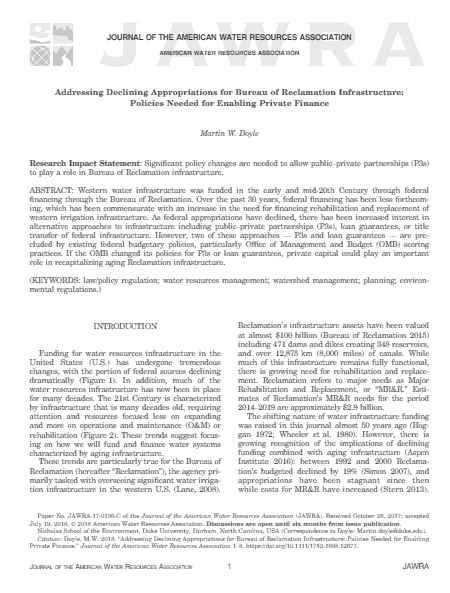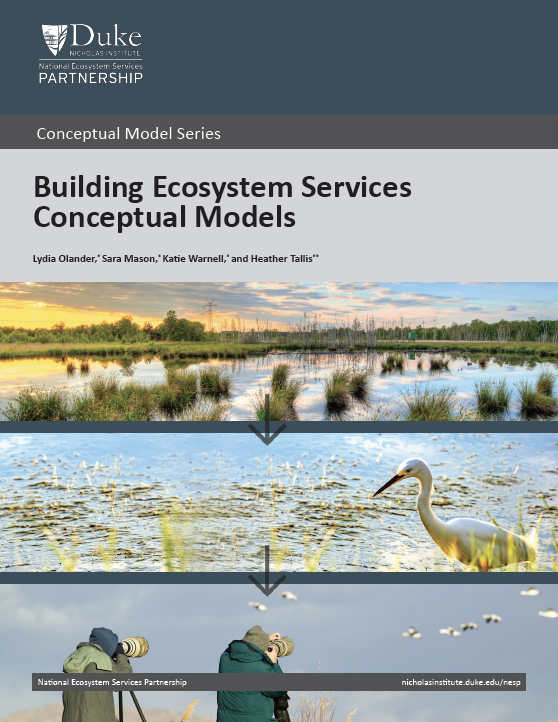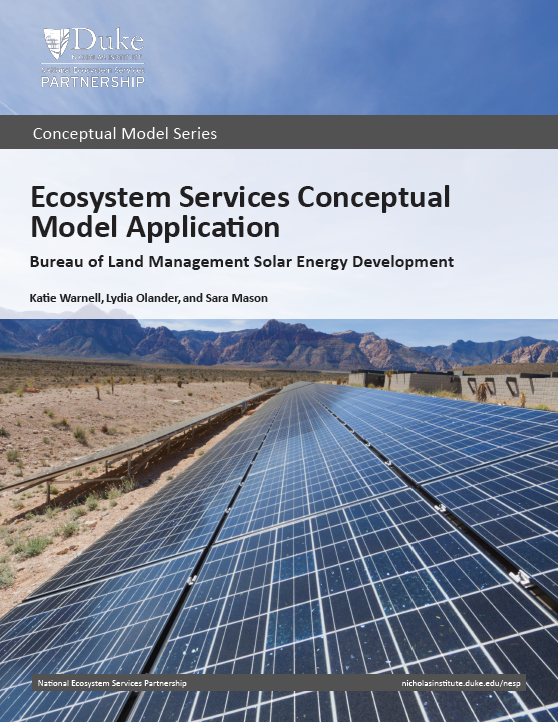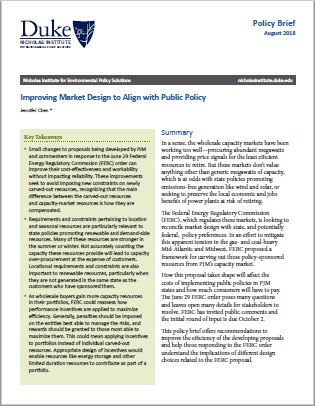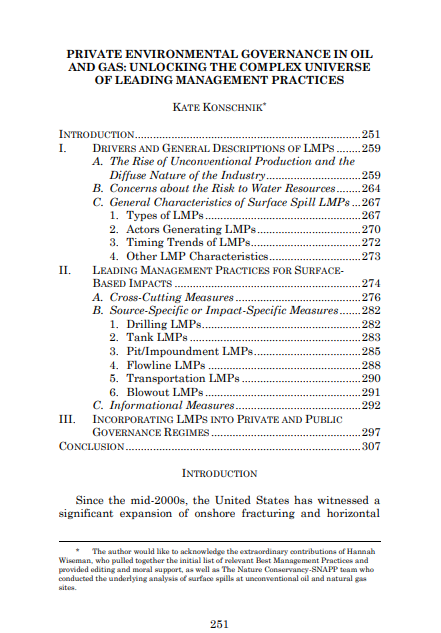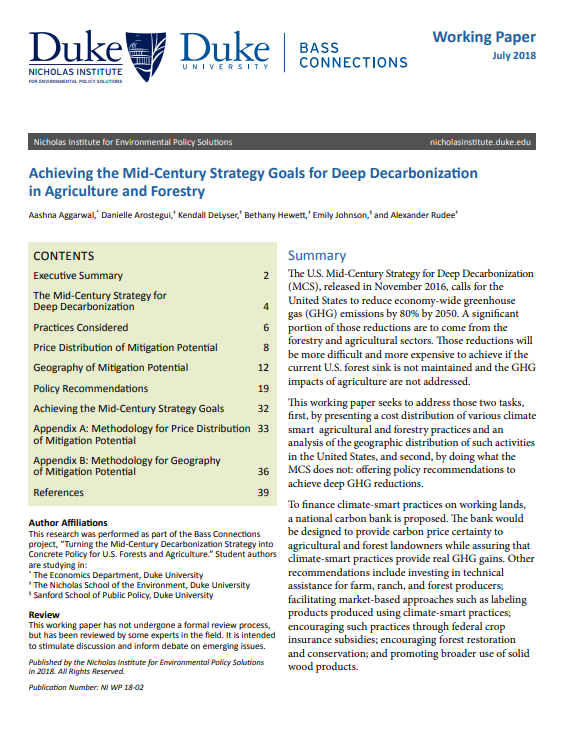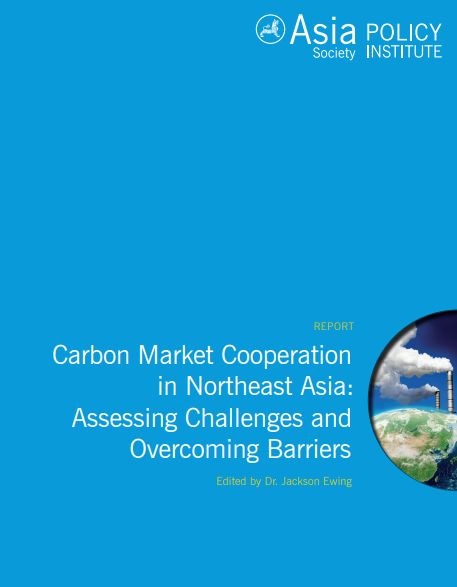Publications
Addressing Declining Appropriations for Bureau of Reclamation Infrastructure: Policies Needed for Enabling Private Finance
Western water infrastructure was funded in the early and mid‐20th Century with federal financing through the Bureau of Reclamation. Over the last 30 years, federal financing has been less forthcoming, which has been commensurate with an increase in the need for financing rehabilitation and replacement of western irrigation infrastructure. This article in the Journal of the American Water Resources Association suggests that if the Office of Management and Budget changed its policies for private partnerships or loan guarantees, private capital could play an important role in recapitalizing aging Reclamation infrastructure.
Building Ecosystem Services Conceptual Models
Funders and developers of infrastructure projects and businesses and managers overseeing critical natural resources are becoming increasingly aware of and interested in ecosystem services. Quick, simple, transparent, and low-cost ways for incorporating these services into decisions are just now under development. One tool that can support widespread implementation is ecosystem services conceptual models. This report facilitates development and use of such models in federal decision making by presenting a “how-to” guide and illustrative examples. It is part of the Conceptual Model Series produced by the National Ecosystem Services Partnership.
Ecosystem Services Conceptual Model Application: Bureau of Land Management Solar Energy Development
This report presents an ecosystem services conceptual model that captures the potential ecological and human well-being outcomes of the installation and operation of solar energy facilities on land managed by the Bureau of Land Management. An accompanying evidence library provides a summary of the currently available evidence for each relationship in the model and an assessment of the strength of that evidence. The model could improve and help to streamline the Bureau of Land Management's environmental assessments. The report is part of the Conceptual Model Series produced by the National Ecosystem Services Partnership.
Ecosystem Services Conceptual Model Application: Testing General Model Adaptability
This case study, a companion to Ecosystem Services Conceptual Model Application: NOAA and NERRS Salt Marsh Habitat Restoration summarizes initial efforts to apply a general salt marsh ecosystem services conceptual model to specific sites. This case study discusses efforts to test whether a generalized model can be adapted to specific sites, noting considerations that arise and revisions that should be made to a general model applied to a particular site. This case study is part of the Conceptual Model Series produced by the National Ecosystem Services Partnership.
Ecosystem Services Conceptual Model Application: NOAA and NERRS Salt Marsh Habitat Restoration
This report provides an illustrative ecosystem services conceptual model for salt marsh restoration at National Estuarine Research Reserve sites. The model captures the potential outcomes of a salt marsh habitat restoration. An accompanying evidence library provides a summary of the evidence for each relationship in the model and an assessment of the strength of that evidence. This report is part of the Conceptual Model Series produced by the National Ecosystem Services Partnership.
Leveraging Big Data Towards Functionally-Based, Catchment Scale Restoration Prioritization
To address limitations to stream and wetland restoration projects, there is a critical need for a functionally-based, high-resolution restoration priority system that can be implemented at broad spatial scales to maximize ecological benefits. This article in the journal Environmental Management describes the River Basin Restoration Prioritization tool developed in conjunction with the North Carolina Department of Environmental Quality to incorporate data models into a catchment scale restoration prioritization framework. It is designed specifically as a state-wide screening tool that assesses hydrologic, water quality, and aquatic habitat quality conditions with peak flood flow, nitrogen and phosphorus loading, and aquatic species distribution models. Although the application of the tool in this analysis is for the state of North Carolina, the methodology and model datasets are readily applicable to other states or regions to assess a large volume of data to better inform restoration choices.
Improving Market Design to Align with Public Policy
The Federal Energy Regulatory Commission, which regulates wholesale capacity markets, is looking to reconcile market design with state, and potentially federal, policy preferences. In an effort to mitigate this apparent tension in the gas- and coal-heavy Mid-Atlantic and Midwest, the Federal Energy Regulatory Commission proposed a framework on June 29 for carving out those policy-sponsored resources from PJM's capacity market. The June order poses many questions and leaves open many details for stakeholders to resolve ahead of the close of FERC’s initial round of public comments on October 2, 2018. This policy brief offers recommendations to improve the efficiency of the developing proposals and help those responding to the FERC order understand the implications of different design choices related to the Federal Energy Regulatory Commission's proposal.
Private Environmental Governance in Oil and Gas: Unlocking the Complex Universe of Leading Management Practices
In the United States, expansion of onshore fracturing and horizontal drilling technologies has sparked calls for greater control of industry impacts. Alongside fractured regulatory efforts, a broad private governance movement has encouraged adoption of voluntary measures—often called “best management practices.” To explore the role of best management practices in unconventional oil and natural gas production, this article in the Florida State Journal of Land Use & Environmental Law focuses on surface spills of hydrocarbons, drilling wastes, fracturing fluid, and wastewater at production sites.
Achieving the Mid-Century Strategy Goals for Deep Decarbonization in Agriculture and Forestry
The U.S. Mid-Century Strategy for Deep Decarbonization, released in November 2016, calls for the United States to reduce economy-wide greenhouse gas emissions 80% by 2050. A significant portion of those reductions are to come from the forestry and agricultural sectors. Those reductions will be more difficult and more expensive to achieve if the current U.S. forest sink is not maintained and the greenhouse gas impacts of agriculture are not addressed. This working paper seeks to address those two tasks, first, by presenting a cost distribution of various climate-smart agricultural and forestry practices and an analysis of the geographic distribution of such activities in the United States, and second, by offering policy recommendations to achieve deep greenhouse gas reductions.
Carbon Market Cooperation in Northeast Asia: Assessing Challenges and Overcoming Barriers
China, Japan, and the Republic of Korea are emerging as major players in the global carbon trading landscape. As Northeast Asia's biggest industrial economies, these three countries are connected through deep commercial and trade ties, and shared environmental challenges. There are thus growing calls for these markets to manage differences to build a foundation for more extensive carbon market cooperation. This Asia Society Policy Institute report draws on the expertise of a wide range of scholars and practitioners to help equip policymakers and other stakeholders with information and guidance on the potential of and pathway toward carbon market linkage in Northeast Asia. This volume includes 11 chapters that examine the challenges of and approaches to carbon market cooperation and linkage in Northeast Asia.

